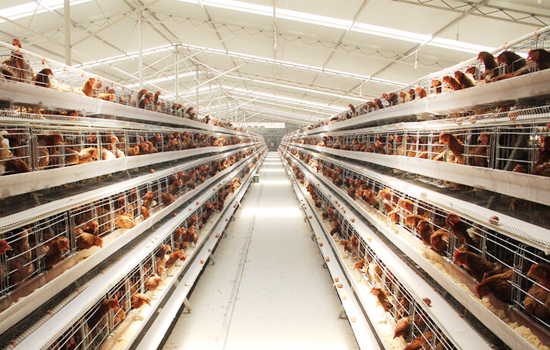Comprehensive Guide to Layer Cages in Zimbabwe for 10,000 Birds
- font size decrease font size increase font size
Layer cages in Zimbabwe have become a cornerstone in the quest for enhanced egg production efficiency poultry industry. This article navigates the intricacies of employing layer cages designed for 10,000 birds, exploring the benefits, challenges, and key considerations that play a pivotal role in optimizing egg production in the Zimbabwean agricultural landscape.

-
Introduction to Layer Cages for 10,000 Birds:
- Provide an in-depth overview of layer cages tailored for accommodating 10,000 birds, elucidating their design and functionality in the context of poultry farming.
- Emphasize the potential for high-density housing and space optimization in large-scale egg production. -
Economic Advantages and Increased Productivity:
- Discuss the economic benefits associated with the utilization of layer cages for 10,000 birds, highlighting increased productivity, efficient feed utilization, and streamlined egg collection processes.
- Explore how the scalability of this system contributes to cost-effectiveness in large-scale egg production operations. -
Optimal Space Utilization and Farm Management:
- Analyze how layer cages designed for 10,000 birds optimize space utilization within poultry farms, allowing for efficient management and organization of the flock.
- Discuss best practices in farm management to ensure the well-being and productivity of the layers. -
Considerations for Bird Health and Welfare:
- Address the importance of maintaining bird health and welfare within the confined environment of layer cages, discussing potential challenges and solutions.
- Explore advancements in cage design and management practices that prioritize the physical and mental well-being of the layers. -
Technological Innovations and Automation:
- Highlight technological innovations integrated into layer cage systems, such as automated feeding, watering, and climate control, to enhance operational efficiency.
- Discuss the impact of technology on reducing labor requirements and optimizing overall farm productivity. -
Local Success Stories and Case Studies:
- Showcase successful implementations of layer cages for 10,000 birds in Zimbabwe, featuring case studies and insights from local poultry farmers who have experienced notable success with this system. -
Regulatory Compliance and Industry Standards:
- Examine the regulatory landscape surrounding the use of layer cages in Zimbabwe, discussing compliance requirements and industry standards for the welfare of layers.
Conclusion:
In conclusion, the adoption of layer cages design for 10,000 birds stands as a transformative strategy in Zimbabwe's pursuit of efficient and sustainable egg production. This article serves as a comprehensive guide, providing valuable insights into the economic advantages, bird welfare considerations, technological advancements, and success stories associated with the integration of these advanced layer cage systems in the Zimbabwean poultry sector.

